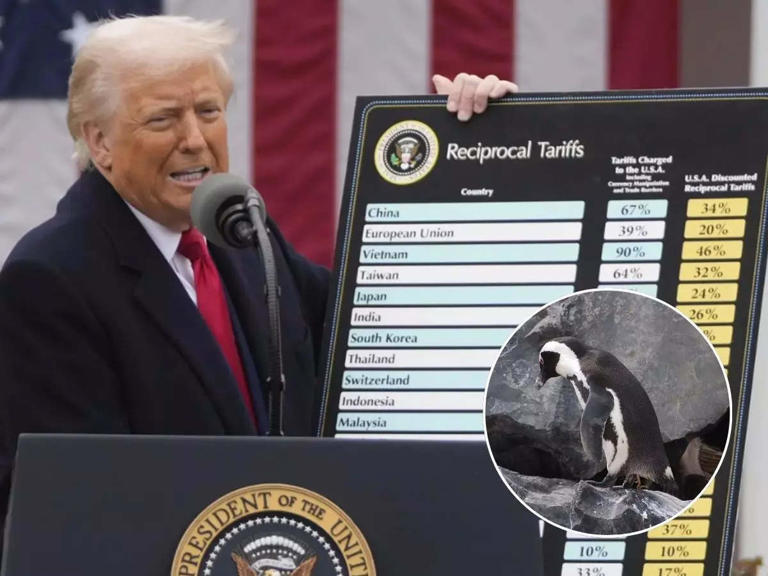Trump’s 104% Tariff on China Triggers Global Market Turmoil and Consumer Price Surge
In a bold and controversial move, former U.S. President Donald Trump has reignited trade tensions with China by imposing a steep 104% tariff on Chinese goods, intensifying fears of a global economic slowdown. The dramatic rise in tariff rates isn’t the result of a single executive order but stems from a series of layered duties introduced over recent months, revealing the complex math and economic impact behind the headlines.
The escalation began in February when Trump announced a 10% tariff on Chinese imports, citing China’s alleged role in the fentanyl crisis. Just a month later, in March, another 10% was added, pushing the total to 20%. The real jolt came last week when Trump slapped an additional 34% tariff as part of his “reciprocal” trade campaign, raising the total to 54%. In response to China’s vow to retaliate, Trump doubled down and imposed a further 50% tariff, bringing the final tally to a staggering 104%.
What makes this number so striking is the cumulative nature of these tariffs. Each percentage increase compounds on top of the previous one, creating a heavier financial burden for U.S. importers. These aren’t flat rate increases; they stack, resulting in dramatically higher costs on Chinese goods entering the U.S. market. According to a report from the Wall Street Journal, these new tariffs build on existing duties from Trump’s first term and additional increases under President Joe Biden. The Peterson Institute for International Economics estimates that the average tariff rate on Chinese goods was already at 20.8% before Trump’s return to power. With the newly layered tariffs, the effective average rate now approaches a staggering 125%.
This aggressive tariff regime has sent shockwaves through global markets. The S&P 500 has plunged, losing approximately $5.8 trillion in value, as investors grapple with the potential consequences of an extended trade war between the world’s two largest economies. Supply chains are facing renewed disruption, and American businesses are bracing for steep increases in the cost of imported materials and goods. A Reuters/Ipsos poll indicates that nearly 75% of Americans now expect everyday items to become more expensive in the coming months, underscoring the widespread impact of the tariffs on the average consumer.
Some goods currently in transit will be temporarily exempt until May 27, but that offers little relief to importers already caught in the crossfire. The uncertainty has prompted many to rush orders or seek alternative suppliers—moves that add logistical challenges and further cost burdens. Meanwhile, China has vowed to “fight to the end,” signaling that more retaliatory measures could be on the horizon, escalating the situation into a full-blown trade conflict.
The ramifications of these tariffs go beyond international diplomacy—they strike at the heart of domestic economic stability. While Trump argues the tariffs are “reciprocal” and designed to protect American industries, economists warn that the real cost will ultimately be passed on to consumers. As the trade war deepens, the political and economic math is becoming increasingly painful, with higher prices, market volatility, and global economic strain.
For video news, visit our YouTube channel THE OLIGO.

